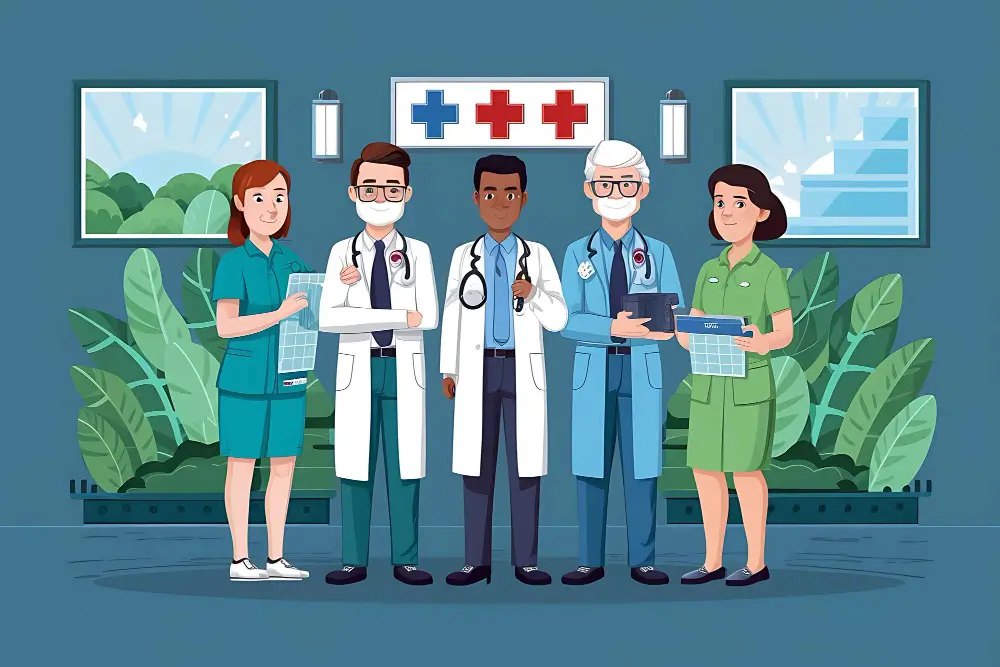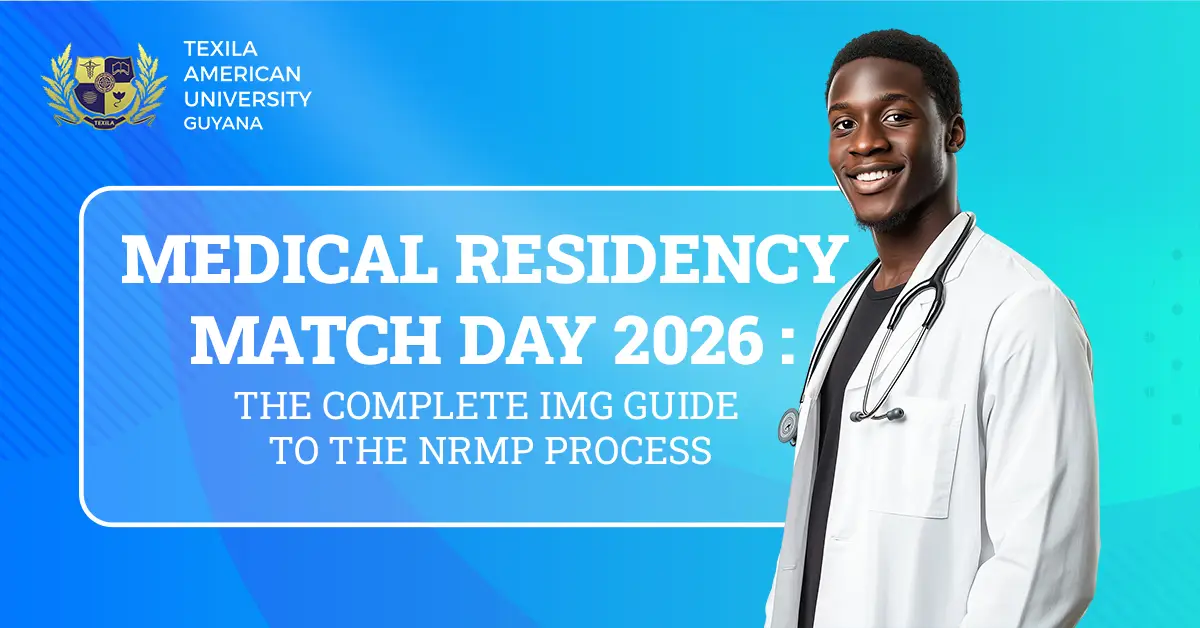Blog Summary:
The fast-paced healthcare industry in the USA has opened a number of opportunities for some in-demand medical specialties. These specialties have been shaped by changes in demography, technology development, and changing patient needs. In 2024, some of the most sought-after specializations into the health sector are the primary care physicians, psychiatrists, geriatricians, nurse practitioners, physician assistants, and emergency medicine physicians. Primary care remains critical with a graying population and has the burden of chronic diseases, while the demand swells in psychiatry with the mental health crisis escalated by COVID. Geriatric care remains crucial in taking care of complex needs in an aging population.
Demographic changes, technological progress, and a shift in the needs of patients make some medical specialties appear to be in continuous demand in the changing landscape of healthcare. Knowing the answer to this question can turn out very important for medical professionals as they set out to plan their careers and for healthcare institutions to understand where workforce shortages need to be met most. In this blog, we look at the most in-demand medical specialties in the USA as of 2024, supported by data and insights from various reliable sources.
General Practitioners
Demand and Shortage: Primary care is the face and backbone of the U.S. health care system. The Association of American Medical Colleges quantified the estimate that there will be a shortage of 17,800-48,000 general Practitioners by 2034. The needs of an ageing population demanding more and greater care, coupled with a large proportion of the current workforce eligible for retirement, will be the major push factor toward shortages.
Why in Demand: More and more cases of chronic conditions like diabetes, hypertension, and heart disease call for continuing care better managed by a primary care physician. Moreover, the care focus has been shifted towards preventive care to reduce the long-term healthcare cost. This further intensifies the need for a primary care provider.
Data: According to the 2023 HRSA report, 83 million Americans live in primary care HPSAs, presenting an unimaginable pressure for more workers in this field.

Psychiatry
Demand and Shortage: It is believed that the mental health crisis in the United States has made the demand high for psychiatrists. The Association of American Medical Colleges has estimated a shortage from 14,280 to 31,091 psychiatrists by the year 2034. Part of the cause, due to the COVID-19 pandemic, the demand for services has accelerated because the cases of anxiety disorders and major depressive disorders, substance abuse, have been on the rise.
Why It’s in Demand: Increasing awareness and reduction of stigma on mental health prompt more people to seek psychiatric care. This has received further impetus through government legislation, which also forced — to an extent — insurance plans to provide greater coverage in the area of mental health.
Data: Well, there has been a 25 per cent rise in mental health service demand since the pandemic period, according to the American Psychiatric Association, APA. Most of this increase is in psychiatric services.
Geriatrics
Shortage and Demand: As the population in the US is aging rapidly, the claims of geriatricians in the entire nation to cater to their needs are becoming increasingly higher. The AAMC predicts that the specialty is on the verge of a critical shortage and is vastly understaffed by possibly 23,000 geriatricians by 2034.
Why It’s Needed: The Baby Boomer generation is aging, and by 2030 all Boomers will be at least 65 years old. Geriatricians play a huge role in managing the messy health requirements of older adults. Often, this age group has several chronic conditions that call for coordinated care.
Data: By 2034, population-based projections by the U.S. Census Bureau indicate that older persons for the first time will outnumber children, therefore increasing demand for geriatric care.
Nurse Practitioners (NPs), and Physician Assistants (PAs)
Demand and Shortage: The roles of NPs and PAs have significantly expanded in primary care and rural health. The U.S. Bureau of Labor Statistics projects employment for nurse practitioners to grow by 45% from 2021 to 2031, much faster than average for occupations.
Why It’s in Demand: NPs and PAs are seen as important for bridging the gap in healthcare, especially in underprivileged areas. The ability to deliver good care, mostly at lower cost, blesses them as a force highly in demand in what is an environment of shortages for the physician force.
Data: The BLS records that in 2021, there were approximately 325,000 practicing NPs with that number expected to climb 117,000 higher by 2031. Similarly, the PA number is projected to rise by 31% in the same timeframe.

Emergency Medicine
Demand and Shortage: The future outlook is that emergency medicine will still remain an Emergency medicine critical shortage speciality. AAMC projects a deficit range of 6,000-18 000 emergency physicians by 2034. A rise in the number of ED visits and increased complexity of cases seen in the ED contribute to this demand.
Why It’s Hot: The very nature of emergencies—both in terms of their sudden occurrence and the fact that they almost invariably require time-pressured, potentially life-saving actions to be taken—means that emergency physicians are always in demand. Demand has lately increased for the same reasons: mass casualty events and the opioid epidemic.
Data: In 2020, the Centers for Disease Control and Prevention (CDC) estimated that there were about 145.6 million emergency department visits- as such, there will always be a great need for providers of emergency care.
Demand for medical professionals in the U.S. is one part demographics and the aging population, along with the changes in healthcare needs. Demographic changes mean changes in the profile of needs, which will evolve and be considerable areas of growth for many new often highly specialized careers.
This is an important view for medical students and practitioners who are in their planning stage of what direction their career will take. How they orient this to their specialty training can provide them a guaranteed job and the effect of this on patient care.
References
1. Association of American Medical Colleges (AAMC). (2023). “The Complexities of Physician Supply and Demand: Projections from 2021 to 2034.”
2. Health Resources and Services Administration (HRSA). (2023). Designated Health Professional Shortage Areas Statistics. This resource, updated monthly, provides lists of federally designated underserved areas and populations in the US, comprehensively drawing from data procured and maintained by the Health Resources and Referral Administration.
3. American Psychiatric Association (APA). (2022). Mental Health Needs in America: Current Data and Trends. This book is particularly useful in identifying how exactly to innovate in the field of psychiatry and even further, where in particular to apply the new treatments and knowledge – in other words, how it focuses on the latest research into mental health and substance use trends and other related figures and data.
Conclusion
The growing demand for specific medical specialties in the U.S. underscores the need for strategic career planning among healthcare professionals. As the population ages and healthcare needs evolve, specialties like primary care, psychiatry, geriatrics, and emergency medicine will continue to play a vital role. Nurse practitioners and physician assistants are also increasingly essential in bridging healthcare gaps, particularly in underserved areas. By staying informed about these trends, medical professionals can position themselves for success while contributing to the overall improvement of patient care in the U.S.
FAQs
Which medical specialties are forecast to be in greatest demand in the United States by 2024?
Primary care physicians, psychiatrists, geriatricians, geropsychiatrists, nurse practitioners, physician assistants, and emergency medicine physicians are forecast to be in greatest demand by 2024, driven by demographic shifts and changes in patient needs.
Why is there demand for primary care physicians in the United States?
Demand for primary care physicians is much in need as the population ages suffer from more chronic conditions, and there seems to be an increasing emphasis placed on preventive care.
What is the shift in the demand for psychiatrists during the COVID-19 pandemic?
The prevalence of anxiety, depression, and substance abuse during the pandemic has increased the demand for psychiatric services.
Why are geriatricians becoming more important for an effective U.S. healthcare system?
Geriatricians are highly demanded since the Baby Boom generation is growing older, and they need professionals to handle their many numbers of chronic conditions, as well as help in the coordination of healthcare through the aging process of a human being.
What are some factors that drive up the demand for nurse practitioners and physician assistants?
The demand is driven by the fact that they are in the increased demand of offering quality services mostly in the too low provision of the number of physicians and can also work to fill the gap that is created due to the shortages of physicians in primary care.












